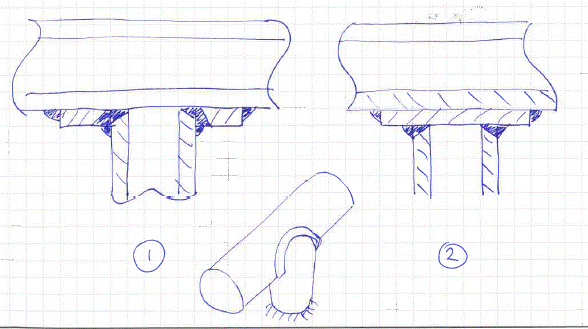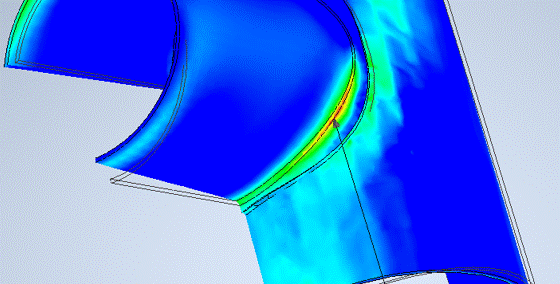KevinNZ
Mechanical
- Jun 12, 2003
- 849
Point for discussion on how best to weld a pipe anchor/trunnion to pipe. As below this could be
1) a set on weld with reinforcing ring on the outside (much like a reinforced tee)
2) full pad welded to the pipe and the anchor welded to the pad.
Fabricators like 2) much easier to make.
As a designer I prefer 1). I can work out an SIF for the stress model and know the pad is not pulling away from the pipe under load. Is there a way to work an SIF for 2)?

1) a set on weld with reinforcing ring on the outside (much like a reinforced tee)
2) full pad welded to the pipe and the anchor welded to the pad.
Fabricators like 2) much easier to make.
As a designer I prefer 1). I can work out an SIF for the stress model and know the pad is not pulling away from the pipe under load. Is there a way to work an SIF for 2)?


